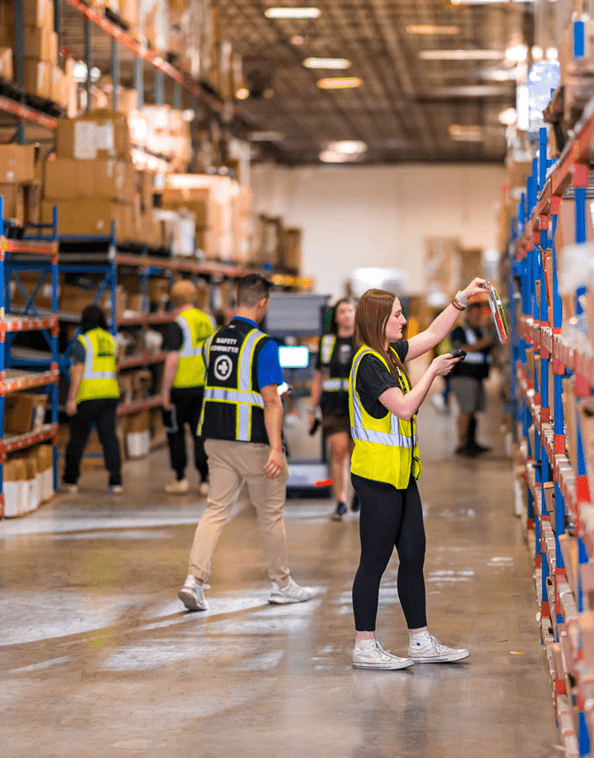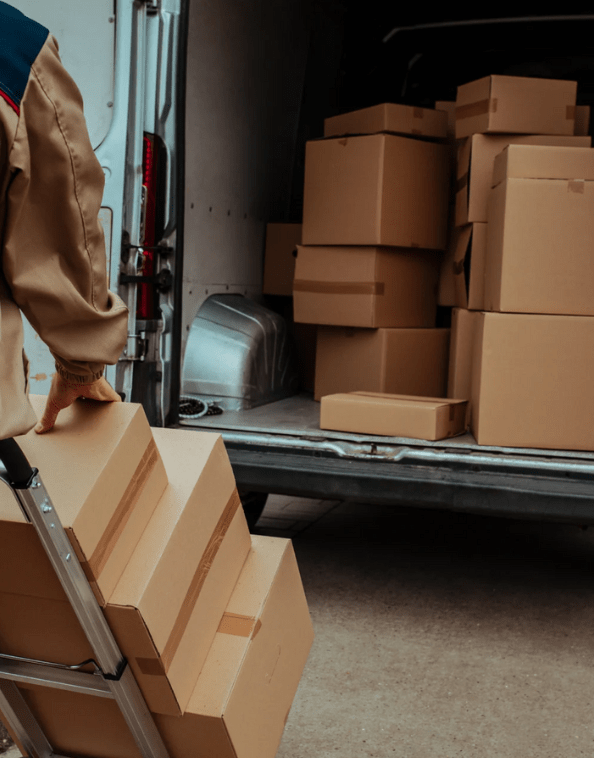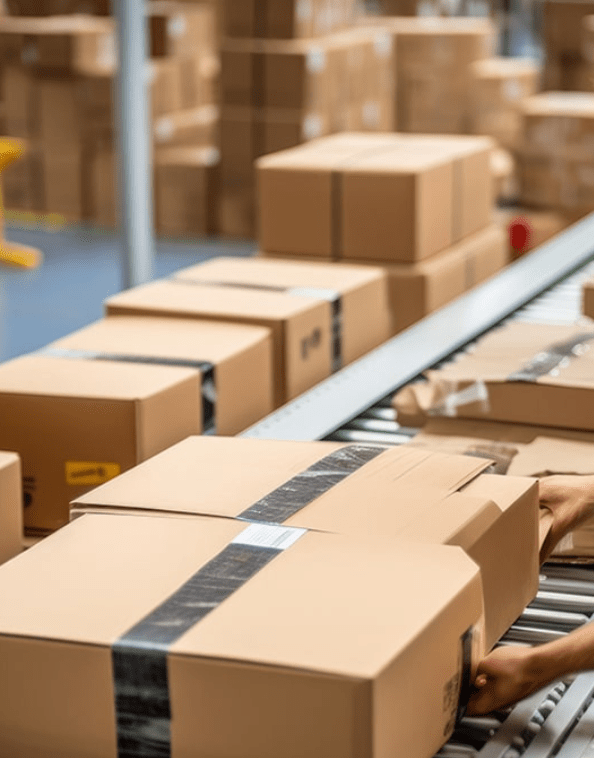What Is a Delivery Exception and How to Resolve It?
Delivery Exceptions
Amazon Seller Central is a powerful platform that enables businesses to sell products online and access millions of shoppers on Amazon’s marketplace. This tool provides business owners with the e-commerce infrastructure and resources needed to become successful online retailers.

If you’ve ever shopped online, there’s a good chance you’ve encountered a delivery exception. According to Loqate, 62% of online shoppers have experienced one. Despite the reliability of many modern shipping carriers, things don’t always go as planned, and delivery exceptions can sometimes occur. When this happens, it can have a ripple effect on your business, from customer frustration to higher operational costs. But by understanding delivery exceptions and preparing for them, you can reduce their impact and maintain customer trust.
What Is a Delivery Exception?
A delivery exception refers to any disruption in the normal shipping process that causes a delay in the arrival of a package. This could be due to a variety of reasons — some out of anyone’s control, like weather disruptions, and others potentially preventable, such as incorrect shipping information.
It’s important to note that a delivery exception does not necessarily mean the package will be late, but rather that something has happened that may require additional attention or adjustment along the delivery route.
How Delivery Exceptions Impact Your Business
For e-commerce businesses, delivery exceptions aren’t just an inconvenience — they can also harm customer relationships, increase costs, and damage brand reputation. Here’s how:
1. Reduced Customer Satisfaction
Customers expect their orders to arrive on time. When they don’t, they may turn to the tracking page only to discover a “delivery exception” message, which can cause anxiety and frustration. Even if the reason is outside your control, it’s still a point of friction for your customers. An unsatisfied customer is less likely to come back, which can hurt future sales.
2. Increased Churn Rate
An unhappy customer might decide not to purchase from your business again, especially if they feel the delivery issue wasn’t resolved quickly. Even if it was the carrier’s fault or due to unforeseen circumstances, a bad delivery experience can lead to customer churn.
3. Damaged Brand Reputation
Even if a delivery exception is due to a natural disaster, incorrect labeling, or another issue outside your control, customers may still blame your business. Their negative experience could lead to poor reviews or social media complaints that tarnish your brand’s reputation.
4. Increased Costs
Delivery exceptions often lead to re-shipping the order, especially if the item was damaged or lost. Not only does this cost your business additional shipping and product expenses, but it also involves time and resources that could have been spent elsewhere. Delivery exceptions also often lead to higher customer service inquiries, which can strain your support team.
Common Causes of Delivery Exceptions
While not all causes of delivery exceptions are preventable, many can be anticipated and planned for. Here are some of the most common reasons packages experience delivery exceptions:
1. Customs Delays
For international shipments, customs can cause unexpected delays. Packages may be held up at customs longer than expected, especially if there’s missing or incomplete documentation. Proper documentation and accurate tariff codes can help minimize these types of delays.
2. Federal Holidays
National holidays, whether in the origin or destination country, can cause delays if shipping carriers don’t operate on those days. If a shipment is delayed due to a holiday, it could result in a backlog of deliveries.
3. Weather Conditions
Severe weather events like hurricanes, wildfires, or floods can make a delivery route impassable, causing delays. These natural events are often beyond anyone’s control but may have a significant impact on the timeliness of delivery.
4. Damaged or Missing Labels
If the shipping label on a package is damaged or illegible, the carrier may be unable to process the delivery. Even small errors, like an incorrect address or missing barcode, can trigger a delivery exception.
5. Recipient Availability
If a package requires a signature upon delivery and no one is home to accept it, the delivery might be delayed. Many carriers will attempt to deliver again on the following day.
6. Missing Documentation
Having incorrect or missing documentation can cause delays. This can include anything from a wrong address to missing customs information. A package with incomplete details may be flagged as a delivery exception and delayed.
7. Security or Regulatory Delays
Certain packages, especially those sent internationally, may be delayed due to security checks or regulatory issues, especially at border crossings. These delays are often temporary, but they can still cause significant disruptions.
8. Animal Interference
Though rare, animals (such as dogs or other wildlife) can sometimes interfere with deliveries, causing delays or interruptions in the shipment process.
How to Prevent Delivery Exceptions
While some delivery exceptions are inevitable, there are several steps you can take to reduce their likelihood and ensure that customers are satisfied:
1. Provide Shipment Tracking
Tracking information is vital for transparency. Allow customers to track their packages so they know exactly where their order is. This will help reduce customer anxiety, especially when a delay occurs.
2. Verify Delivery Addresses
Ensuring that customers provide the correct shipping address is key. Incorrect addresses are one of the leading causes of delivery exceptions. Utilize address validation tools to ensure that all required address elements are correct and complete.
3. Enable Shipping Notifications
Proactively inform customers about the status of their shipments, especially if a delay occurs. Providing proactive updates via text or email about potential delays can help manage customer expectations.
4. Optimize Logistics Processes
Diversifying your logistics partners and spreading your inventory across multiple fulfillment centers can help reduce the impact of unexpected disruptions. This way, if one fulfillment center is affected by a weather event or other issue, you can ship from a different location.
5. Use Weather-Resistant Labels
Weather conditions can sometimes ruin shipping labels, especially in rainy or snowy climates. Use waterproof labels to ensure they remain readable and scannable in all conditions.
6. Use Multiple Carriers
By diversifying your carrier mix, you ensure that you don’t rely on just one provider. This helps mitigate the risk of consistent delivery exceptions with a single carrier and gives you more flexibility during peak seasons or extreme conditions.
7. Leverage Order Fulfillment Software
Many modern fulfillment platforms offer advanced software that automates address verification, provides real-time tracking updates, and helps optimize shipping routes and carriers, reducing the risk of delivery exceptions.
Conclusion
Delivery exceptions are an unavoidable part of e-commerce, but they don’t have to be a major headache. By staying proactive and prepared, you can manage delivery exceptions effectively, keeping your customers satisfied and protecting your brand’s reputation. By implementing best practices like address validation, providing transparent tracking, and optimizing logistics, you can reduce the occurrence of delivery exceptions and respond efficiently when they happen. Ultimately, how you handle these hiccups could be the difference between a one-time shopper and a loyal customer. Learn how FulfillMe can help.



